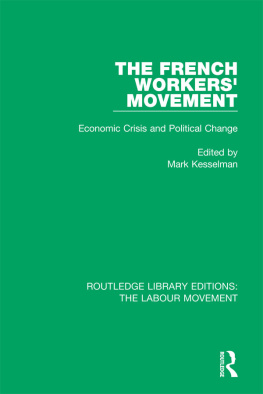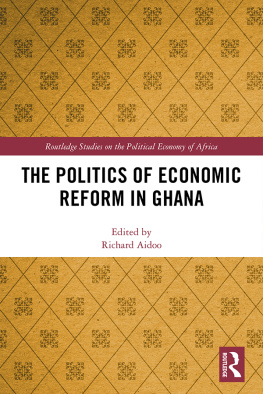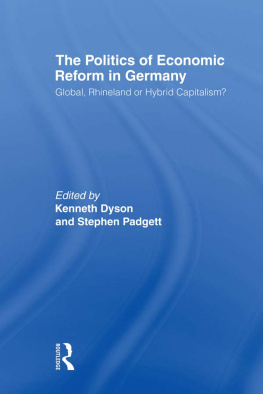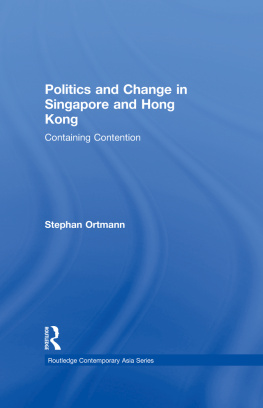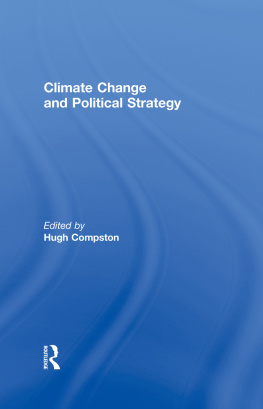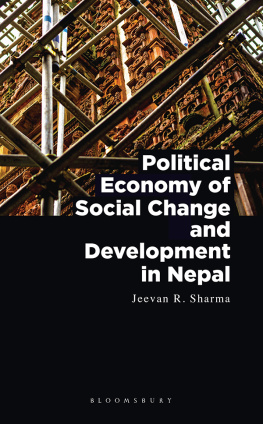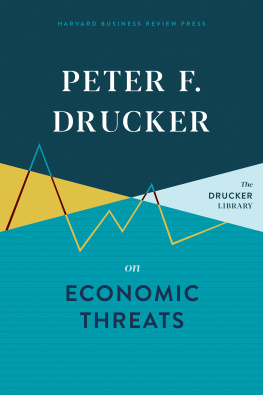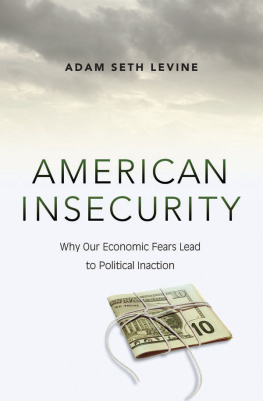Economic and Political Contention in Comparative Perspective
Economic and Political Contention in Comparative Perspective
edited by
Maria Kousis and Charles Tilly
First published 2005 by Paradigm Publishers
Published 2016 by Routledge
2 Park Square, Milton Park, Abingdon, Oxon OX14 4RN
711 Third Avenue, New York, NY 10017, USA
Routledge is an imprint of the Taylor & Francis Group, an informa business
Copyright 2005, Taylor & Francis.
All rights reserved. No part of this book may be reprinted or reproduced or utilised in any form or by any electronic, mechanical, or other means, now known or hereafter invented, including photocopying and recording, or in any information storage or retrieval system, without permission in writing from the publishers.
Notice:
Product or corporate names may be trademarks or registered trademarks, and are used only for identification and explanation without intent to infringe.
Library of Congress Cataloging-in-Publication Data
Economic and political contention in comparative perspective / edited by Maria Kousis and Charles Tilly.
p. cm.
Includes bibliographical references and index
ISBN 1-59451-074-1 (hardback: alk. paper)
1. Social conflict. 2. EconomicsSociological aspects. 3. Protest movements. 4. Social movements 5. Social change. I. Kousis, Maria. II. Tilly, Charles. III. Title.
HM1121.E25 2005
306.3dc22
2004026280
ISBN 13 : 978-1-59451-074-8 (hbk)
ISBN 13 : 978-1-59451-075-5 (pbk)
Designed and Typeset by Straight Creek Bookmakers.
To our families, young and old, far and near.
Contents
Maria Kousis and Charles Tilly
Julie Berclaz and Marco Giugni
Marc W. Steinberg
Jeffrey Broadbent
Dieter Rucht
Rod Aya
Klaus Eder
John K. Glenn
Chris Tilly
Richard Hogan
Maryjane Osa and Cristina Corduneanu-Huci
Maria Kousis
Charles Tilly
This volume is a product of the international conference Contentious Politics and the Economic Opportunity Structure held in October 2002. The invited authors, specialists in the field of contentious politics who presented papers on the topic, include former students of Charles Tilly at the University of Michigan: Richard Hogan, Jeffrey Broadbent, Marc Steinberg, and Maria Kousis; collaborators: Marco Giugni and Chris Tilly, and other scholars with an interest in Tillys work: Dieter Rucht, Klaus Eder, Maryjane Osa, and John Glenn.
The conference was held as an event honoring Charles Tilly in celebration of the twenty-fifth anniversary of the University of Crete, following unanimous decisions by the Department of Sociology and the University Senate. Rod Ayas chapter is a product of a follow-up conference on Mediterranean contention (supported by ECs Euromed Heritage II project Mediterranean Voices, the Hellenic Ministry of Culture, and the University of Crete), held in October 2003 at the University of Crete. In this volume, as at the conference, the European and American specialists in economic and political processes make references, critical or otherwise, to Tillys work. They freely criticize, modify, or reject Tillys ideas on their subjects.
The conference was sponsored by the Alexander S. Onassis Public Benefit Foundation, the Hellenic Ministry of Culture, the Bettiko Foundation, and the University of Crete. Their financial support is gratefully acknowledged.
We also deeply thank Dean Birkenkamp and his collaborators at Paradigm Publishers for all their efforts toward the production of this volume.
Maria Kousis and Charles Tilly
Actual participants in contentious politicsstreet-level activists, citizens who band together against polluters of their neighborhoods, national leaders bidding for membership in the European Union, and many morefeel threats and opportunities vividly. They organize to fend off threats and keep themselves alert to new opportunities. While threat and opportunity form visible features of contenders political and economic environments, attempts to specify how they work have frequently stumbled. Two problems have proven extremely difficult:
first, distinguishing between systematic variation in the surroundings of political actors, on one side, and variations in the responses of the same actors to those surroundings, on the other;
second, connecting the two: discerning how surroundings and responses interact.
This volume takes the two problems seriously. It does so mainly by using new evidence to take close looks at interactions between political contenders and their surroundings, both political and economic.
The American and European specialists of this volume focus their chapters on the empirical findings of their own research on contentious politics in North America, Europe, East Asia, and other regions. Despite considerable differences in theoretical and methodological orientations, they have all moved beyond earlier debates to look seriously, systematically, and innovatively at threat and opportunity, with particular attention to the influence of economic change and variation on contentious politics.
The volume falls into three main sections. All three focus chiefly on the interplay of economic and political forces in contentious politics involving transnational or national players and issues. addresses economic, political, and other opportunity structures. Its chapters concentrate on close analyses of opportunity and threat as such. They range across contemporary Western European national settings (Berclaz and Giugni), British history (Steinberg), and postwar Japan (Broadbent). Ascending to the transnational level Rucht examines electronic communication as a new opportunity structure for contemporary global justice movements.
(How Politics and Economics Change Opportunities) shifts attention in two ways: toward economic change as a bearer of opportunity or threat and toward the impact of economic change on particular varieties or instances of political mobilization. Two of its studies (those of Eder and Glenn) examine transnational contentious politics under European unification, while the third (Tilly) deals with a contemporary movement in the United States. Aya breaks with the data analyses and case studies of other chapters by proposing a general comparison of ideas about revolution in Tilly and Thucydides.
(Threats, Opportunities, and Forms of Action in Changing Economies) concentrates more heavily on the internal dynamics of contentious politics, with Hogan updating Marxist analyses of collective action, Osa and Corduneanu-Huci comparing political mobilizations in nondemocracies across the globe, and Kousis reporting on state responses to sustained environmental mobilizations in southern European Union member states.
In recent years, phenomenologically oriented students of social movements and other forms of contentious politics have repeatedly challenged the idea of political opportunity structure on the ground that actors always reinterpret their environments, hence that collective action bears no systematic, reliable relation to its political and economic surroundings as an external observer might describe them. The challenge has had a valuable effect; it has reduced the prevalence of a lazy, pernicious practice: first describing an episode of contention, then searching around for threats and opportunities in its setting that might have stimulated or shaped the episode, without actually tracing the putative effects of those threats and opportunities, or even how those effects worked.


